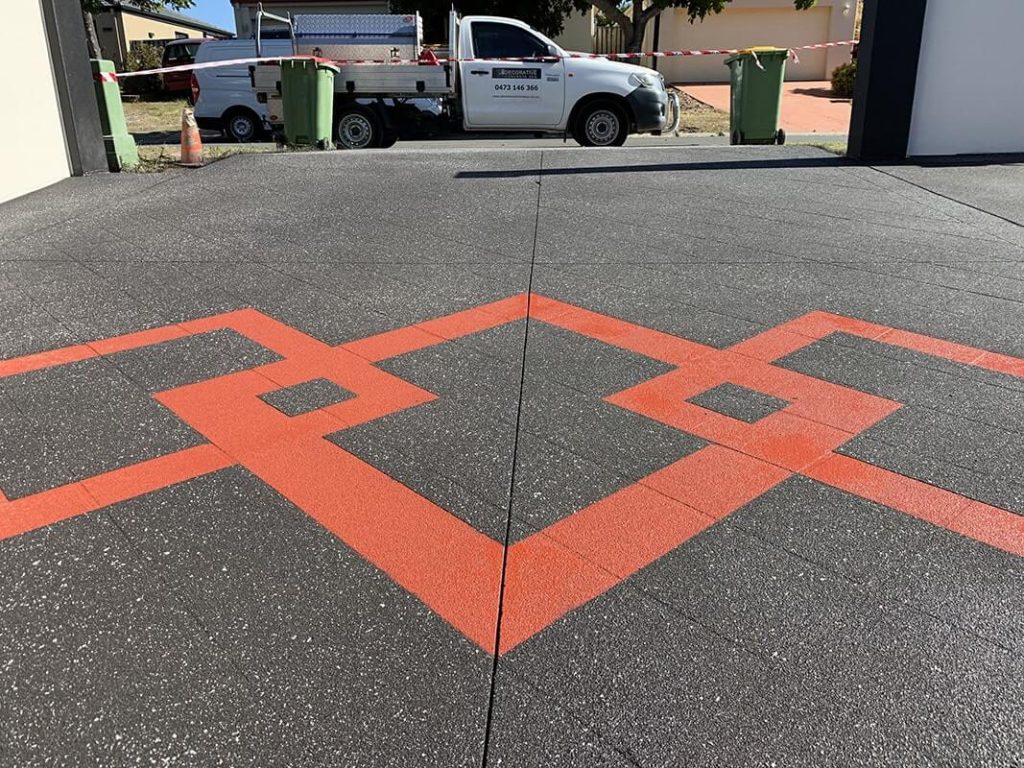How Concrete Stencilling Works?
You don’t have to go above and beyond when it comes to adding value to your property. Most of the time, all you need is to spice up a specific part of your home, and it will work like magic. One of the cost-effective and yet aesthetic tricks you can apply is as simple as concrete stencilling.

What Is Concrete Stencilling?
Concrete stencilling can be applied directly to fresh concrete or existing concrete with an overlay. The stencilling process varies since it is reliant on the stencil type, manner of application, and the choice of decorative effects.
Stencilling techniques are also vast, but the popular ones including applying colour using water or chemical stains, embossing patterns, sandblasting, and etching designs directly to the concrete.
Concrete stencilling often involves a residential property’s spaces like the patio and the driveway. However, you can also stencil areas of your commercial properties to add an aesthetic appeal.
The stencilling process can be done on either indoor and outdoor surface. You can choose whatever kind of finish you desire. Instead of refurbishing a specific surface to change its look and feel, you can opt for this process and save yourself from hefty refurbishing costs.
Concrete Stencilling—How Does It Work?
1. On placing the stencils
After the concrete preparation, the stencils are then carefully placed on the wet surface of the concrete. This process often involves two people. One holds the stencil roll in place, and the other has the uncoiled part of the stencil on the other side.
Stencils are done one strip at a time. Upon doing so, the workers must take careful consideration to ensure the pattern’s continuity.
2. On adding colour to the concrete
After the stencil application, colour is added by broadcasting a colour hardener on the surface and using a bull float to work it into the slab. The concrete should be moist enough for it to absorb the hardener. Hardeners can add strength to the concrete and can produce strong colours.
While colour hardener is used to add colour to the concrete after the stencil application, adding oxide into the mix is one of the current trends in adding colour to the concrete itself.
3. On adding texture to the concrete
An antique release agent is applied first before adding texture to the surface. When creating patterns, a texture roller is often used. Texture rollers come in various textures and can produce a wide range of decorative effects, such as stone or brick patterns. However, for tile patterns, Fresno trowels are used.
Before passing over the texture rollers on the slab, the slab must be firm enough to receive the texture.
4. On showing the results
This is the most-awaited part of the concrete stencilling process—the results reveal where the pattern is seen in its nearly final form before adding the finishing touches.
After creating texture on the slab, the stencils are then removed. The stencils used are no longer usable for another stencil application and are discarded after clearing them off the surface. Removing the stencil starts with removing the last stencil that was laid first during the stencil application.
5. On adding finishing touches
The stencilled concrete is then clean by a pressure washer the next day after the pour. Sawing the crack control joints are then followed. Concrete sealers are added as a finishing touch if necessary.
The final finish is crucial as the wrong choice of finish will make the surface slippery, especially during rainy days and winter.
Benefits of Concrete Stencilling
Concrete stencilling can give you many benefits. Here are some of the basic ones that seal the deal.
It unleashes a surface’s potential
Do you have dull surfaces on your property? Applying stencil can be one of the best ways to unleash your surface’s potential and elevate the entire look of your property to a whole new level. You can go for a tiled look, brick, and even a wooden one if you want. The design opportunities are boundless, and it is made possible with concrete stencilling alone.
It strengthens the quality of your surface.
The hardener you used to add colour can help in adding strength to the concrete itself. As a result, you no longer have to replace your flooring for decades to come. It adds beauty and functionality to space and adds durability that enables the floor to last longer compared to other flooring choices.
It saves you on resources.
As mentioned, concrete stencilling adds durability to your concrete. And since it is durable, it will barely get damaged, which means that you will no longer have to redo your floors. You also save on time and energy because the upkeep is minimal.
It keeps you from slipping.
Slipping on your driveway is probably one of the worst scenarios you’ve imagined. Such a scenario doesn’t have to be a reality if you opt to stencil your driveway as it can reduce the possibilities of you and other people slipping during the wet and winter seasons.
Get Decorative Concrete SEQ for Your Concrete Stencilling Needs
Stencilling can be a reasonably easy job, especially if you have the complete tools, materials, and the proper knowledge of the stencilling application techniques. However, the process can still be tricky as there could be external factors such as temperature and wind. Hence, it is a wise and practical move to work with a professional, such as Decorative Concrete SEQ, who can give you your desired decorative concrete look.
Are you interested in availing of concrete stencilling services after knowing how it works and its benefits? Then give your plain, dull concrete spaces a 180-degree turn with Decorative Concrete SEQ’s concrete resurfacing and stencilling services. Call us at 0473 146 366 today to get started.
